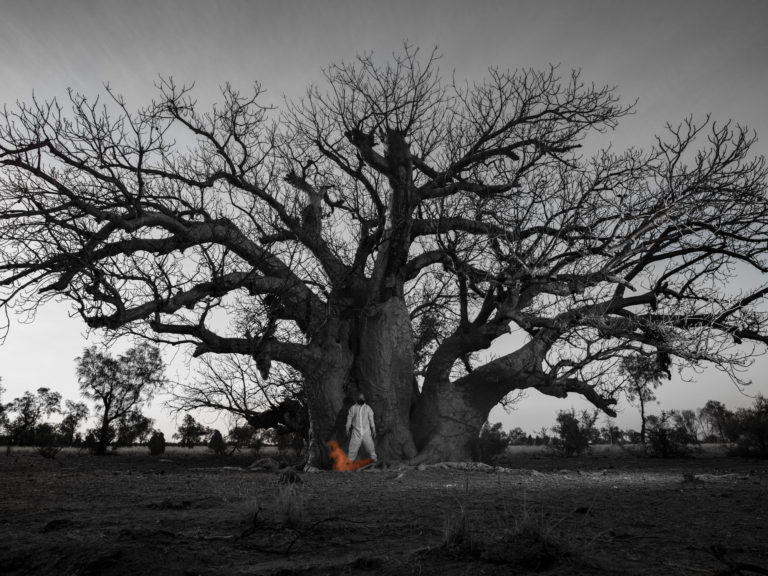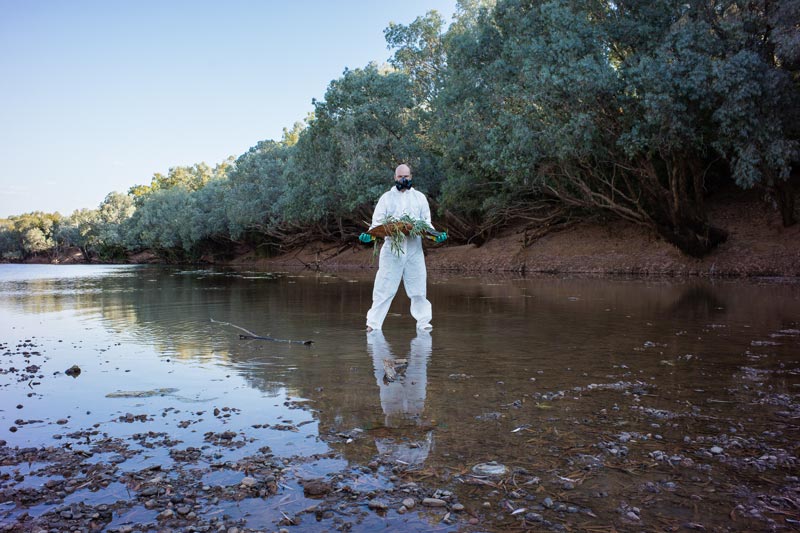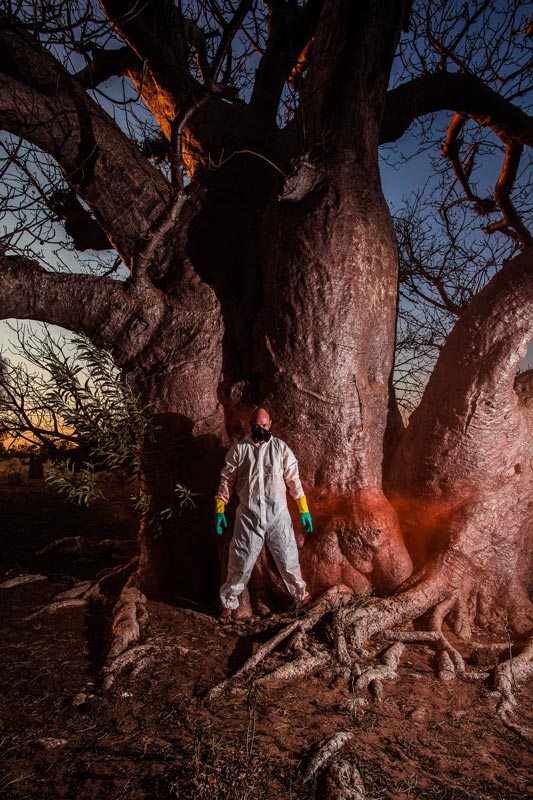245T (Agent Orange)
In the early 1970s the WA Agriculture Protection Board hired more than 300 men to eradicate the weeds, Noogoora Burr and Parkinsonia, that were affecting livestock across northern WA.
The herbicide the men were spraying contained the now-banned substance 245T – an ingredient in the defoliant Agent Orange.
‘Agent Orange’ legacy continues to haunt next generation of West Kimberley families
By Briana Shepherd
Updated 9 Oct 2015, 7:27pm
A weed-spraying program that used toxic chemicals linked to Agent Orange continues to haunt families in Western Australia’s Kimberley.
Groups of men – many of them now dead – sprayed the chemicals wearing little more than shorts and singlets during the 1970s and ’80s.
Standing in the Derby cemetery looking down over the graves of two of her children and one grandchild, Lena Buckle-Fraser says she will never forget the smell.




The memory of that toxic scent is now associated with only one thing
for the Derby elder – death.
“I lost my third son Lance in 1998, my daughter in 2001 and Kingsley,
my grandchild, in 2010,” she said.
“I know it was that Agent Orange that killed them.”
In the early 1970s the WA Agriculture Protection Board hired more than 300 men to eradicate the weeds, Noogoora Burr and Parkinsonia, that were affecting livestock across northern WA.
The herbicide the men were spraying contained the now-banned substance 245T – an ingredient in the defoliant Agent Orange.
Ms Buckle-Fraser lived with her five children next door to where she said the trucks that held the barrels of the substance were parked and stored over the wet season.

“When the rain would come it would wash all the residue off the drums
and into my yard,” she said.
“There was a hollow where the clothesline was and
the children use to play in that.”
Chemical blamed for birth defects in new generation
The Derby elder also blames the chemical for a rare condition her granddaughter was born with.
Similar to other birth defects being reported from affected areas of Vietnam, Serena Buckle’s left arm never fully developed.
“When I was young I was ashamed, you know being a little kid and getting picked on and stuff like that,” Ms Buckle said.
The 32-year-old lost her father when she was 15 – Lance Buckle sprayed for the APB and like others died from cancer.
“I would have loved for him to see us grow up, and for him to see who we are today,”she said.
The young presenter at the local radio station says she is more confident now and barely remembers she has a disability.
For peace of mind she says she would like to know if her father’s exposure to the chemical might be responsible for her condition – or have anything to do with her four miscarriages.
“To tell you the truth, I don’t know if it’s the chemicals or not,
but every time I have fallen pregnant I’ve always lost the baby,” she said.
Scientific proof difficult: lawyer
The link between particular conditions and dioxin exposure has never been scientifically proven.
However, the United States government offers compensation for Vietnam veterans and their children for a range of cancers, diseases and birth defects related to their war service.
Three WA government inquiries were conducted in the early 2000s and since then workers have been allowed to apply for compensation.
But, so far only eight workers, all believed to have suffered from cancer, have received any help.
A Perth law firm has been working on the case since 2009.
Solicitor Mike Lourey says they are preparing a new legal push for those affected.
“To see the damage that has been caused directly and
indirectly as a result of the exposure Aboriginal workers encounter
just going about their employment with the APB – it’s truly saddening,” he said.
Mr Lourey concedes that helping the children and grandchildren of workers is not going to be easy.
“There are a number of people being born with impediments and
disability as a result of possible chromosomal change,” he said.
“But evidence is problematic.”
We now know that there is trans-generational inheritance from exposure to herbicides.
Occupational health physician Andrew Harper led the initial inquiry and said it is biologically possible for dioxin poisoning to be passed down generations.
“We now know that there is trans-generational inheritance
from exposure to herbicides,” Dr Harper said.
“This is something that is biologically plausible.”
Dr Harper believes that the families of the men who sprayed the chemical cocktail deserve to be listened to and have access to a medical consultant or doctor.
“It has never been resolved and the Government’s response has been simply to look at the whole problem statistically,” Dr Harper said.
“And when the statistics were not there, they really washed their hands of it and I think that’s most irresponsible.”
Unfinished business in search for answers to son’s death
It is the lingering questions that Aboriginal elder and recent member of the Order of Australia Lucy Marshall said she cannot live with.
“It’s unfinished business,” she said.
Ms Marshall knows better than many the pain of loss, especially from possible effects of dioxin poisoning.
Her son, Cyril Hunter, sprayed for the APB and was the first of the workers to die, in 1983.
It is understood that parts of his body kept for testing are still in long term storage at a pathology service in Perth.
But the testing has never happened.
In Aboriginal culture the spirit is unable to move on if the body is not buried whole but Ms Marshall wants answers before laying Cyril to rest.
“He’s wandering, still wandering,” she said.
“It’s a very bad thing that happened to us.”
The WA Government declined to be interviewed on the topic.
In a statement, it said that an expert medical panel in 2003 had found an increased risk of cancer but not enough evidence to support the claims of other illnesses.
It said workers who have had their claims for compensation declined can continue to access public health services.
Article written by Briana Shepherd of ABC link to original LINK